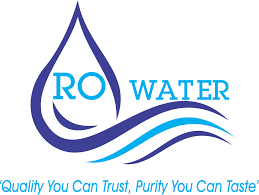
Is RO Legit and Safe?
Summary
Yes, RO is legit and safe! It’s a trusted water purification method that removes harmful contaminants like chlorine, lead, and bacteria. Many homes, businesses, and even hospitals use RO for cleaner, better-tasting water. While it does remove some good minerals, you can easily fix that with a remineralization filter. Some water is wasted in the process, but modern RO systems are more efficient. As long as you choose a high-quality system and maintain it properly, RO is a genuine and reliable way to get safe drinking water. If you want peace of mind, RO is a great choice!
Pros
- Removes Contaminants
- Improves Taste
- Trusted Technology .
- No Chemicals:
Cons
- Removes Some Good Mineral
- Wastes Some Water
- Needs Maintenance
RO, or Reverse Osmosis, is a water purification process that removes harmful contaminants like chlorine, lead, and bacteria. It works by pushing water through a special filter that catches all the bad stuff while letting clean water pass through. Many people use RO systems at home to get safe and fresh drinking water. It’s a legit and proven method used worldwide. While some worry it removes good minerals, you can easily fix that with a remineralization filter. If you want cleaner, better-tasting water, RO is a safe and reliable choice. Just make sure to get a high-quality system!
Before we dive into whether RO is legit and safe, let’s start with the basics—what is RO? You might have come across this term and wondered, “What’s the deal with RO?” Well, RO stands for Reverse Osmosis, a popular water purification process that ensures you get clean, fresh, and safe drinking water. But is it all it claims to be? Let’s find out.
How Does RO Work?
Let’s break it down in simple terms. Imagine a super-fine filter that only lets water molecules pass through while blocking out all the nasty stuff—chemicals, bacteria, and impurities. That’s basically what RO does! It uses a semipermeable membrane to filter out unwanted particles from water, making it safer to drink. Sounds pretty legit, right?
Here’s a step-by-step of how it works:
- Pre-Filtration: Water first goes through a pre-filter to remove large particles like dirt, sand, and rust.
- Reverse Osmosis Membrane: This is the star of the show. It filters out harmful contaminants like lead, fluoride, chlorine, and even some bacteria.
- Storage Tank: The purified water is stored in a tank until you’re ready to drink it.
- Final Filtration: Before reaching your glass, the water passes through another filter to make sure it’s fresh and clean.
Is RO Legit?
If you’re asking, “Is RO legit?” The answer is a resounding YES! Reverse Osmosis has been around for decades and is trusted by households, businesses, and even the military. It’s a scientifically proven method to purify water, and it’s used worldwide.
But, like anything, not all RO systems are created equal. Some brands sell low-quality filters that don’t last long or don’t filter as effectively as they should. So, while RO itself is legit, choosing the right RO system is key.
Is RO Safe?
Alright, let’s get into the big question: Is RO safe? The short answer? Absolutely! But there are a few things you need to keep in mind.
Why RO is Safe:
- Removes Harmful Contaminants: RO effectively removes lead, arsenic, chlorine, and bacteria from your drinking water.
- Reduces Waterborne Diseases: Since it removes harmful microorganisms, it significantly lowers your risk of infections from contaminated water.
- No Chemicals Involved: Unlike some purification methods that use chemicals, RO relies on filtration, making it a natural and safe process.
Are There Any Safety Concerns?
The only minor concern is that RO also removes some beneficial minerals, like calcium and magnesium. But don’t worry! You can easily fix this by using a remineralization filter or just eating a balanced diet. Simple, right?
Features of a Good RO System
If you’re considering getting an RO system, here’s what you should look for:
1. High-Quality Membrane
A good RO system should have a strong, durable membrane that filters out contaminants effectively.
2. Multi-Stage Filtration
Look for systems that offer at least 4 to 5 stages of filtration for maximum purity.
3. Remineralization Option
Some RO systems come with a remineralization stage to add back essential minerals. This is a great feature to have!
4. NSF Certification
Always check for certifications like NSF (National Sanitation Foundation) to ensure the product meets high safety standards.
5. Easy Maintenance
A good RO system should be easy to clean and replace filters. Nobody wants a system that’s a nightmare to maintain!
RO and Security: Is There a Scam Risk?
Now, let’s talk about security. You might be wondering, “Are RO systems a scam?” Nope! But you do need to be careful about where you buy them from.
Here’s what to watch out for:
- Fake Brands: Some shady companies sell low-quality RO filters that don’t do their job properly. Always buy from reputable brands.
- Overpriced Systems: Some sellers overcharge for RO systems that aren’t worth it. Compare prices and read reviews before purchasing.
- False Claims: Be cautious of companies promising things like “100% removal of ALL contaminants.” No filter can remove everything—but a high-quality RO system comes pretty close.
Why You Should Trust RO Systems
We get it—there’s a lot of misinformation out there. But here’s why you should trust RO:
- It’s Backed by Science: RO technology is widely used and scientifically proven.
- Used by Millions: Households, restaurants, and even medical facilities use RO systems.
- Improves Water Quality: If you want better-tasting and safer water, RO is a solid choice.
RO Legit and Safe: Pros and Cons
Pros:
✅ Removes Contaminants: RO filters out harmful chemicals, bacteria, and heavy metals, making your water safer.
✅ Improves Taste: No more weird smells or chlorine taste—just fresh, clean water.
✅ Trusted Technology: Used in homes, businesses, and even medical facilities worldwide.
✅ No Chemicals: Works by filtration, not by adding chemicals to your water.
Cons:
❌ Removes Some Good Minerals: But you can fix this with a remineralization filter.
❌ Wastes Some Water: The process discards some water, which may bother eco-conscious users.
❌ Needs Maintenance: Filters need changing every few months.
Overall, RO is a legit and safe way to get clean water!
Final Verdict: Is RO Legit and Safe?
So, let’s settle this once and for all. Is RO legit? Yes. Is RO safe? Yes. But, like anything else, you need to make smart choices. Get a high-quality system, do your research, and buy from a trusted source.
If you’re still on the fence, think about it this way: Would you rather take a risk with unfiltered tap water, or would you prefer the peace of mind that comes with purified, safe water? I know what I’d choose!
At the end of the day, RO is a genuine and secure way to improve your water quality. Just be sure to buy from a reputable brand, maintain your system, and enjoy clean, fresh water every day!
RO (Reverse Osmosis) FAQ
1. Is RO legit?
Yes! Reverse Osmosis is a proven water purification method used worldwide. It effectively removes harmful contaminants and provides clean drinking water.
2. Is RO safe?
Absolutely! RO systems remove bacteria, chemicals, and heavy metals, making your water much safer to drink.
3. Does RO remove good minerals?
Yes, it removes some beneficial minerals like calcium and magnesium, but you can use a remineralization filter to restore them.
4. Does RO waste water?
RO does produce some wastewater, but modern systems are more efficient and minimize waste.
5. How often do RO filters need changing?
Typically, every 6-12 months, depending on usage and water quality.
6. Can RO remove viruses?
Yes, RO can remove many viruses, but for extra protection, some systems include UV filters.
7. Is RO expensive?
The initial cost varies, but it’s a cost-effective way to ensure safe drinking water in the long run.
8. Where can I buy a good RO system?
Look for reputable brands with certifications like NSF to ensure quality and effectiveness.
Let me know if you have more questions! 😊


